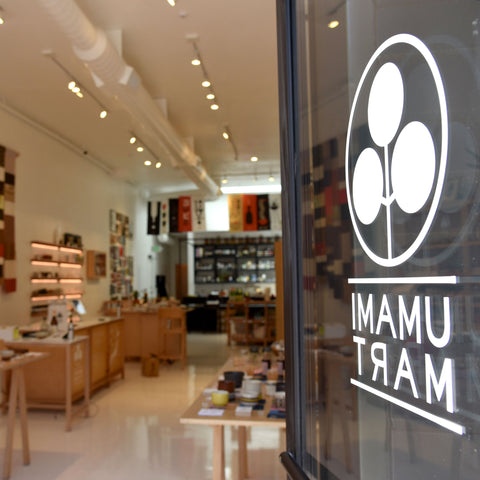
This month’s selections L-R: Narutotai LED Junmai Ginjo + Hanabusa Yamahai Junmai
It delights me that every year I hear about a new woman sake maker. Since I started featuring Female Frontrunners in 2017, I feel a glimmer of hope that things are changing to let more voices be included in previously male-dominated arenas. As gender barriers slowly erode in the sake world, innovations in sake-making evolve to include people of all backgrounds. Innovations include technological advances that reduce physical labor and increase precision, and a dissolving of rigid rules that have fallen out of context (i.e. worker hierarchy based on seniority and gender). This leaves sake makers to focus more of their energy on new ideas and techniques.
Rumiko Moriki of Moriki Shuzo elaborates, “Sake-brewing used to be a male-only world, and makers were forced to follow strict standards in order to keep uniform quality. Women were excluded for a long time, and for that reason, when they started sake-making they weren’t boxed into methods and ideas, and were more free to express unconventional ideas.”
Diversity in the sake world still has a long way to go, but as interest in sake travels around the world, we are seeing progress. Earlier this month, Kayoko and I visited Matsuse Shuzo and Kita Shuzo in Shiga Prefecture. The production line at Matsuse Shuzo included two women, one Australian, and one Korean out of a crew of 12. Kita Shuzo’s brewing operation is headed by Mayuko Kita, who is taking over the brewery as both owner and head brewer, all while raising her newborn baby. Kita offered insight into this experience, as she described that raising a baby and making sake share commonalities including: reacting to minute changes in behavior and marveling at the progression throughout the process.
We have two very different and expressive sakes for you this month. All members get the Narutotai LED Junmai Ginjo – a vibrant, fruity sake that balances sweetness and acidity. Level 2 members will get the Hanabusa Yamahai Junmai from the legendary Moriki Shuzo. This sake is made with pesticide-free rice, using the natural yamahai method which enhances umami and acidity in the final brew. We’ll continue to celebrate Female Frontrunners over two months, so stay tuned for Pt. 2 in April!
Kanpai.
Yoko (Co-Founder, Umami Mart)

Narutotai LED Junmai Ginjo
Honke Matsuura Brewery (Tokushima, Japan)
Seimaibuai: Tokushima grown Awaichiba Yamada Nishiki 58%, SMV: -20, Acidity: 2.5, Yeast: LED Dream 3826
Go ahead and judge this tart and sweet sake by its label! Motoko Matsuura of Honke Matsuura says, “The label expresses the multi-layered tropical flavors of this sake with multiple colors on its label.” We get aromas of young banana and mango. Flavors of juicy apple and tangy, sweet star fruit follow. The yeast used for this sake is called LED Dream 3826 and was developed using LED illumination in Tokushima. The juicy acidity is thanks to this yeast strain. Enjoy chilled in a wine glass with rich dishes like smoked duck, smoked salmon, or blue cheese.
Hanabusa “Bouquet” Yamahai Junmai Muroka Nama Genshu
Moriki Shuzo (Mie, Japan)
Seimaibuai: Estate grown, pesticide free Yamada Nishiki 70%, SMV: +7.5, Acidity: 2.0, Yeast: Ambient
After her father suddenly passed away, Rumiko Moriki took over and started brewing in 1989, becoming the first woman sake brewer. Before many of us became familiar with terms like “pesticide-free” and “ambient”, Moriki was already deep into brewing sakes using natural methods. Over 20 years ago Moriki passed the brewing torch onto Rie Toyomoto, making Moriki Shuzo the first to have woman tojis over two generations. Moriki explains the concept of this sake, “Hanabusa is a pure rice sake made from rice grown without the use of pesticides or fertilizers, and is fermented naturally without adding lactic acid or yeast.” The result is an assertive, savory sake that has notes of bright red apple and juicy orange, with aromas of rice bran pickles and baked pie. I urge you to warm up this sake to 110°F in ceramic cups and enjoy alongside cozy winter foods like pork and beans, or nimono (simmered root vegetables).
Sake Gumi is our monthly sake subscription service with nearly 200 members throughout the country. Join today!





Comments (0)
There are no comments for this article. Be the first one to leave a message!